Review for A Life of Oharu
Kenji Mizoguchi had already been directing films for decades when he made ‘The Life of Oharu’ in 1952. To a large degree, he specialised in highly emotional and very visual films about the circumstances of women in Japanese society. ‘The Life of Ohura’ was seen by many as the director’s masterpiece – the logical culmination of years of film-making – and it sparked a whole new era for him when the film made something of an international splash on release, winning the International Award at the Venice Film Festival that year.
For an international audience, ‘Ohura’ was something altogether new. Unlike Kurowsawa’s work (probably the only known filmic export at the time), here was a film that was a gently paced tragic melodrama, showing the spiralling decline of its lead from grand heights to the depths of street prostitution – almost Thomas Hardy like in its relentless downward narrative.
The film features Mizoguchi’s favourite lead actress, Kinuyo Tanaka, who features in 15 of his films during a period of just over a decade. It’s not easy to see her immense appeal to, not only the director, but to the whole nation, as she seems to lack the charismatic sparkle that we expect our acting heroes here in the west to possess. But maybe that was the point. She almost perfectly represents a more introverted, shy and unimposing ‘victim’ that, culturally, tugged at the nation’s heart-strings. She was also not in her flush of youth, as cruelly reflected in the film’s opening scenes where she is cowering under a veil in an attempt to hide the fact that, as a prostitute, her fifty years are just too many to be commercially successful.
Despite this grim and believable opening, it is during the flashback scenes, when she is supposedly in her twenties, that, as an audience, we really have to suspend our disbelief as, other than a tad more make-up, she remains a fifty - year old woman.
It was an odd time to make the film, especially one with so bleak a narrative with very little optimism, even at its dark conclusion. Japan was occupied by the US at the time. Set in the 17th Century, during feudal rule, it shows a time when women were far from emancipated and appeared to be entirely at the behest of their masters; whether that was their Father or husband. It was certainly not a time to be free to fall in love with anyone in a lesser class.
The start of Ohura’s long and painful life story begins when she is caught with an inappropriate lover; someone well below her social standing. As a result, he is executed and she and her family are shamed and commanded to leave Kyoto, never to return.
Living in a small province, with an almost Cinderella like twist to the tale, she is plucked from village obscurity when a local Lord, whose own wife is barren and cannot give him an heir, demands that his minions find him the ‘perfect woman’. She must be perfectly proportioned and not have a single mole on her body. Only one person fits the bill – Ohura.
She is then sold to the Lord, against her wishes, by her Father, and she endures endless suffering and misery in his service. Filmed as an immserive melodrama, with very few cuts and the camera positioned on a floating platform to allow the viewer to get in among the action, Mizoguchi was a believer in getting the best from his actors, believing performance to be the essence of a great film. To this end Tanaka, despite the formality of the role, was something of a method actor, and immersed herself in period dress for some months before the shoot. Mizoguchi used many very valuable period props on set too, believing that, even these, would imbue the film with authenticity.
Quote apart from the emotive melodrama of the film’s narrative, the film is a joy to watch from a film-making perspective. Quite apart from the exquisite detail in every shot, is the fact that almost every sequence is played out in a single shot, never breaking the actors performances and leaving space for silence and thought where required. The camera is quite still although often gently floating among the actors – a technique favoured by Mizoguchi who spent most of his day on the camera platform, constructed precisiely for this purpose. It’s remarkable that the film, which runs for 140 minutes, has only 180 edits, meaning the average shot length is almost a minute. When you consider your average Hollywood action film averaging 5 seconds a cut, it gives an idea of the gentle pace of the film.
As this is a Criterion release, not only is the transfer top notch, but it comes with a ton of contextual extras, good enough for a film school style immersion into the film.
There is a partial audio commentary (25 minutes) from scholar Dudley Andrews which offers up lots of useful background about the original novel, the director and his leading lady and the international reaction to the film which was seen as somewhat risqué on release.
The 20 minute featurette, “Mizoguchi: Art and the Demimonde” is a so-called visual essay tracing the biography of Mizoguchi who was quite a character – especially when set in the oppressive formality of pre-war Japan. Some of Ohura’s scenes, like the tattoo sequence, make more sense with some of this biographical context – which is heady stuff.
“Kinuyo Tanaka’s New Departure” (2009) , is a full-length documentary by Koko Kajiyama, about Tanaka’s life and career – all the more poignant for it running so close a parallel to The Life of Ohura’s narrative. After a goodwill visit in 1949 to the USA., from which she returned looking like an Americanised Hollywood starlet, shocked the Japanese nation and she came under heavy critisicm as a result, never fully recovering her pre-war status. This so affected Tanaka that she considered suicide.
The disc also comes with a short booklet featuring an essay by film scholar Gilberto Perez which is a worthwhile read.
Whilst tragic, historic melodramas are most decidedly not my thing, there is still much to enjoy and appreciate in ‘The Life of Ohura’. Having said that, it’s probably not a film I will return to again, though I’m happy to have seen it once, particularly in such a fine edition.
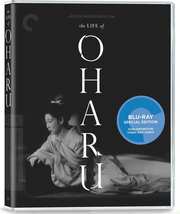
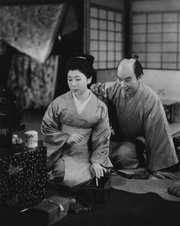
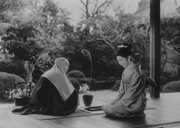
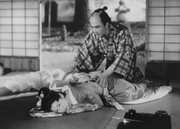
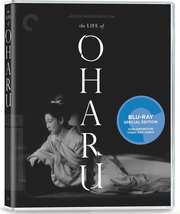
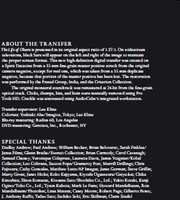




































Your Opinions and Comments
Be the first to post a comment!